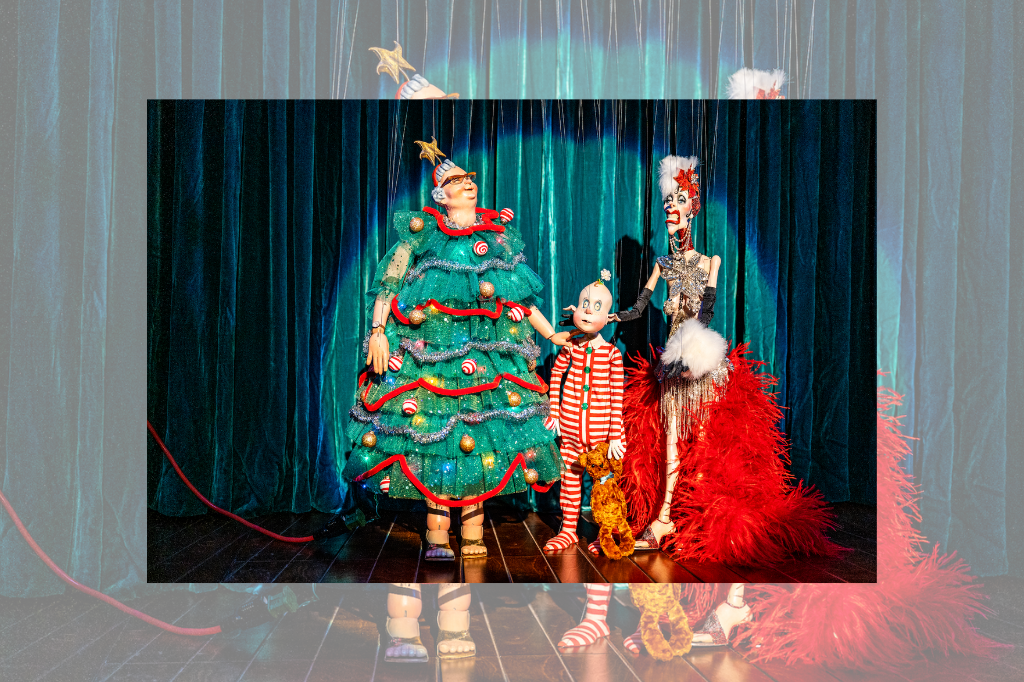REVIEW: Little Dickens at Canadian Stage
I mean.
Where does one begin with Ronnie Burkett?
When you walk into Little Dickens at Canadian Stage, you’re told it’ll be anywhere from 80 to 120 minutes, depending on Burkett’s mood. The solo show’s loosely based on A Christmas Carol — very loosely indeed — and it’s about as raunchy as a puppet show can be (not counting Avenue Q). Audience participation does not have a question mark at the end — if you’re picked, you’re picked, be it to turn a crank or play a small role or stand onstage shirtless for a few minutes. No kids allowed, too; it’s strictly 16+.
Little Dickens doesn’t need me (or any critic) to vouch for it; a Siminovitch Prize winner and Officer of the Order of Canada, Burkett is a legend of Canadian theatre, one whose reputation should be enough of a draw on its own. But Little Dickens confirms how Burkett’s work has achieved that mythic brilliance. A little improv, entirely goofy, Little Dickens frequently calls back to Burkett’s Daisy Theatre, but for those not yet in on the Burkett canon, fear not: the work still makes sense if you haven’t seen its predecessors.
Little Dickens follows languishing diva Esme through the usual Christmas Carol shtick — she’s not particularly kind to her stagehands, or her family, or her fans, and it’s Christmas Eve, so her dour attitude has caught up to her in the form of three ghosts of Christmas. Lessons are learned. Christmas ditties are sung.
But it’s Ronnie Burkett. So the Dickens of it all is pretty thin. Sure, we watch Esme learn the true meaning of Christmas with a rotating cast of puppets, and we sing a little, but the Christmas Carol part of Little Dickens is almost an afterthought. The heart of the show is in the imperfections — the banter between Burkett and his stage manager, the jabs at other Toronto theatre companies, the line flubs and quick recoveries. As Burkett summons different marionettes — about 12 used in total on opening night, but there are dozens more that we can see in the wings, presumably available for Burkett to use if he so wishes — the show becomes more and more untethered.
And yet, the craft persists. Each of the puppets is gorgeously crafted, with tiny, intricate details and spectacular costumes (which, according to Burkett, come from Dollarama). Burkett incorporates a scrappy aesthetic, wrestling with rotating backdrops with feigned difficulty and gently teasing Canadian Stage’s production values (there’s no named sound designer or lighting designer, which Burkett told the audience with sadistic glee on opening night) before returning to manipulating his marionettes with ease. Burkett is a total force, and he’s in his element here, festive singalongs and all.
There are perhaps conversations to be had on audience consent — Burkett is relentless in his pursuit of voluntold helpers. I’d be curious to see what happens if someone chosen to go up onstage were to say no; opening night’s group was remarkably good-natured. Take this as a word of warning: if you’re on an aisle or near the front, you may well be asked to play with some puppets.
Little Dickens is a wild ride, and to be frank, your mileage may vary — it’s often rude, and subject to the whims of a rather silly but totally in-control puppet master. Little Dickens is pure, weird, unbothered fun: it doesn’t need to be anything more.
Little Dickens runs November 23 through December 18, 2022 at Canadian Stage.















Comments